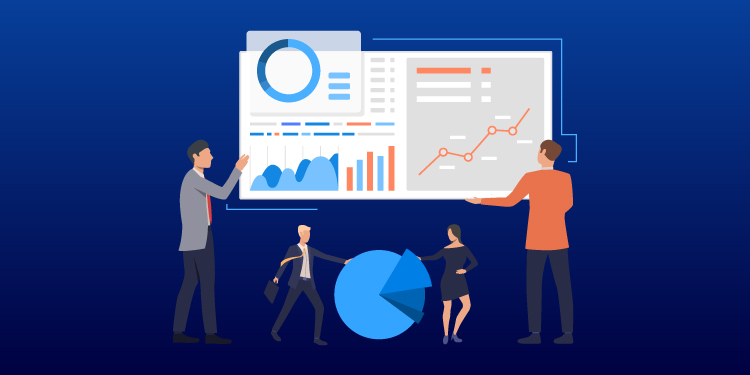
Using Customer Data to Drive Better Customer Engagement: A Guide
Gautam Mane, October 8, 2021
Take a long, hard look at your marketing practices. Done? Now, be honest with yourself – does it look like you’re in a hurry to make profits? If you’re unsure about the answer, on a scale of 1 to 10, how much would you rate your customer engagement strategies?
If the rating went anywhere below 8, you’re in trouble! As a marketer, you’re no stranger to the cliché advice – love your customers. But still, ask yourself, “Do you really love them?” Frantic, impatient efforts to generate ROIs clearly indicate you want to milk them dry. Why not fan their hunger and let them decide whether what’s served on the platter of your business is appetizing enough?
In other words, build solid customer engagement strategies. And if you’d like to have ‘no-regrets’ customer engagement advice, start with customer data. This guide will tell you how.
How Your Customer Contact Database Can Help You Drive Engagement
The number-one way your customer contact database can drive better engagement is by letting you know exactly what each lead wants and on which marketing channels they are most active. If your database only includes high-value accounts that have shown the strongest buying signals, you know that these contacts are more likely to initiate a purchase at the end.
However, there’s a catch to it – not every one of the lead will be at the same spot in the marketing funnel. Typically, there are three stages in which your leads can be segregated –
-
The Awareness Stage (Top of the Funnel)
At this stage, a lead has simply started recognizing their pain-points and is in the early stages of their research. They are unlikely to respond well to information-loaded, long-form content such as case studies, whitepapers, industry reports, etc. Give them room to breathe by targeting them only using short-form, digestible content pieces such as infographics and blog posts.
-
The Consideration Stage (Middle of the Sales Funnel)
At this stage, the leads have a clear idea of their need and may be on the lookout for practical solutions. It is at this stage that you need to establish your brand as a thought leader in their eyes. The best way to do so is to share those case studies and industry analysis reports that show you’re on top of the market.
-
The Decision-Making Stage (Bottom of the Funnel)
At this final stage, it’s your time to give your all. It is here that you can give your customer engagement strategies a short break as your marketing game needs to be strong. Go all salesy by highlighting the key benefits of your products or services, share product comparison guides, maybe even customer success stories and testimonials to encourage your leads to make a purchase.
And This is How it All Ties Together!
1. You Can Start Using Social Media as a Tool, and Not Merely a Platform
Yes, social media platforms such as Facebook and LinkedIn are great for connecting with like-minded professionals, running native ads, etc. but most importantly, they help you establish yourself as a thought leader.
No other place is better to go all out with your content marketing strategies. Based on the purchase intent of your leads, start meaningful conversations with them across various social media groups. You can even direct them to valuable case studies or industry reports for more credibility. Starting conversations the right way ensures you attract only the right target accounts.
For target accounts that are at the middle of the funnel, don’t forget to let them know the key highlights of your brand’s products and services and use direct referrals to encourage them to promote your brand.
2. Ensure Your ABM Game is Strong
This strategy is the best way to focus more on your most valuable customers and sell more to them as they’re most likely to purchase. This marketing works a lot like scale model marketing, where the entire account is considered to be a niche, and you focus on directly reaching out to their key decision-makers who can make purchase decisions in your favor.
Your marketing database can help you segment your customers based on their job title, industry, geographical location, etc., and you can address each segment’s key pain-points to target them with relevant content.
3. Bring Event Marketing into the Mix
Forming a true community around your brand must be a top goal. And interactive events make this possible. Event marketing allows your customers to know you in a more intimate way, and not just as a brand they’re doing business with. How your customer database works here is it lets you identify the leads that are at the right stage for accepting event invites, which is most likely those transitioning from the awareness stage to the consideration stage. The event will act as the guide they need to understand their needs better and how your offerings can meet their needs.
4. You Simply Can’t Ignore Email Marketing
No matter the industry, email marketing works for all kinds of marketing goals – lead generation, demand generation, and most importantly, customer engagement. Once you have identified your most valuable contacts and included their details in your database, you need to start engaging them with your brand by sending out hyper-relevant email content. You can even share links to relevant blog posts that address your leads’ unique pain-points.
However, be careful about the timing of your emails. Your customers do love to hear from you, but sending out emails too frequently may turn them off. Conversely, long time gaps will make your customers forget about you, giving your competitors the upper hand. Ideally, if you’re sending out information-packed long-form content links to your leads, give them a week’s time before you send out another exciting piece or follow-up with them.
Customer engagement is crucial as it gives your customer room to breathe. It’s quite similar to a self-paced learning environment where your customer gets the time they need to understand their needs and your solutions. Plus, contrary to what brands think, solid customer engagement strategies are highly effective in shortening sales cycles, building trust, and increasing ROIs. So the time you spend engaging your customers is never wasted!





